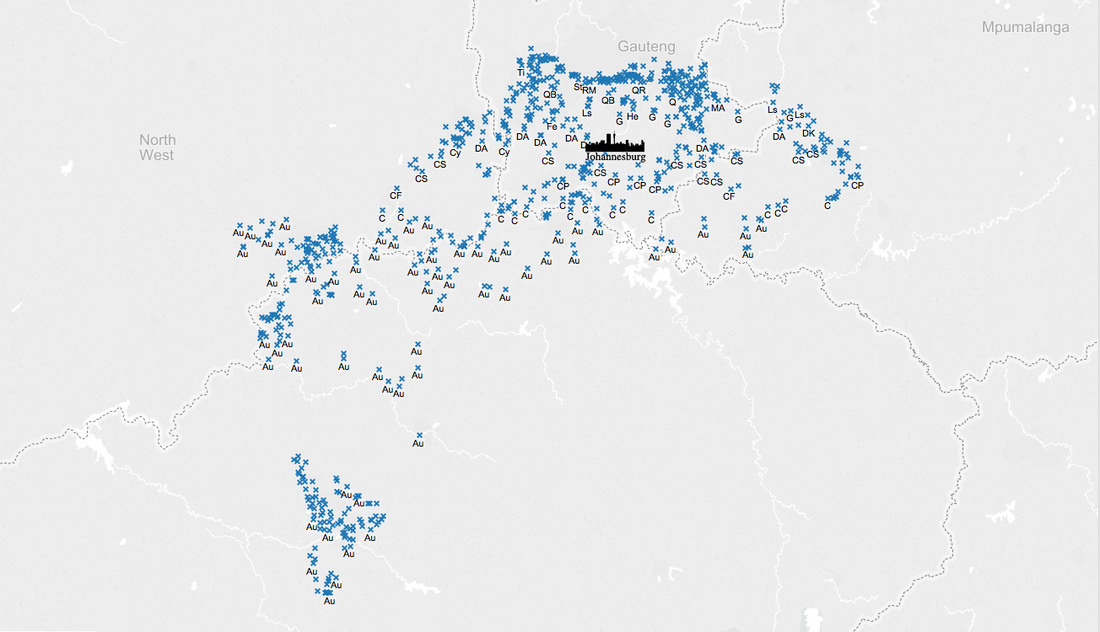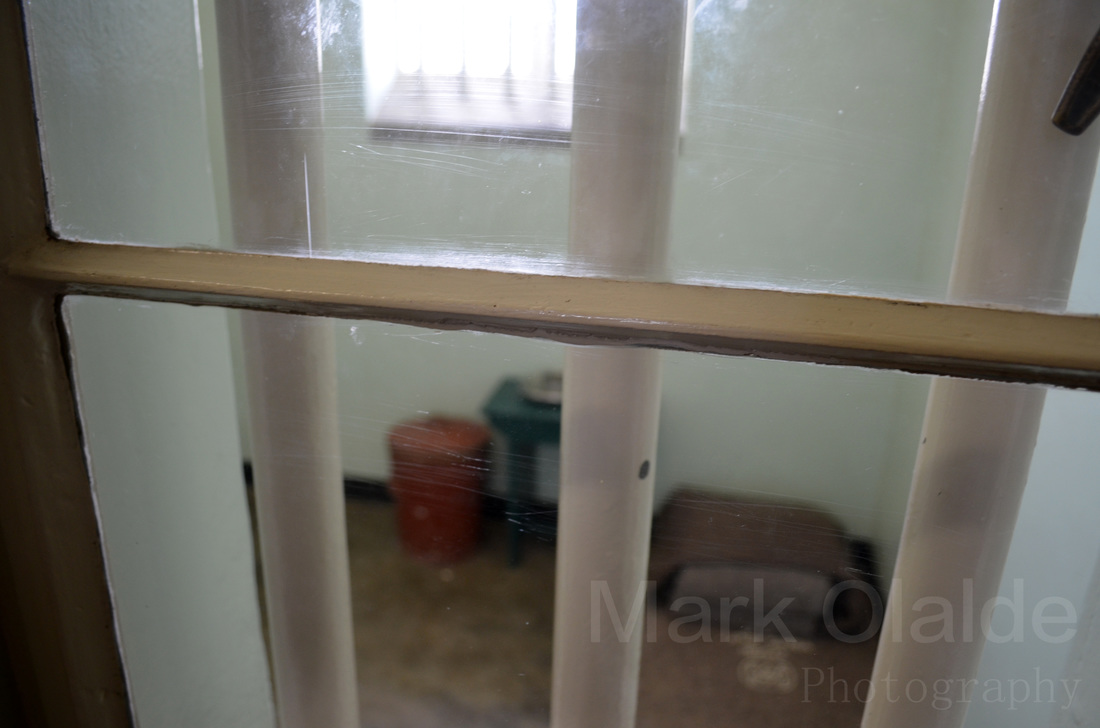Sharp, sharp!
I am reporting from the mines that are currently abandoned, derelict and ownerless, but there is a much broader context explaining why this situation arose. The few interviews I have conducted with illegal miners so far illuminated this. They work to send remittance; they work because unemployment is rampant in South Africa yet astronomical in their home countries; or they work to pay for their children's schooling. It is evident that a specific environment is necessary to foster such a black market.
Their existence and that of other less-than-legal behavior brings crime, HIV/AIDS, substance abuse, prostitution and numerous related issues. However, the act of arresting someone for a criminal behavior does little good -- if not some bad -- when broader issues are not addressed. To give my readers the beginning of that necessary context, I have listed 11 important statistics concerning life in South Africa. I included minimal editorializing to aid understanding of the numbers while allowing you to draw your own conclusions. Read on to learn more, and be on the lookout in the coming weeks for more information on the process of illegal mining, the legal issues of addressing it and much more.
Cheers,
Mark
I am reporting from the mines that are currently abandoned, derelict and ownerless, but there is a much broader context explaining why this situation arose. The few interviews I have conducted with illegal miners so far illuminated this. They work to send remittance; they work because unemployment is rampant in South Africa yet astronomical in their home countries; or they work to pay for their children's schooling. It is evident that a specific environment is necessary to foster such a black market.
Their existence and that of other less-than-legal behavior brings crime, HIV/AIDS, substance abuse, prostitution and numerous related issues. However, the act of arresting someone for a criminal behavior does little good -- if not some bad -- when broader issues are not addressed. To give my readers the beginning of that necessary context, I have listed 11 important statistics concerning life in South Africa. I included minimal editorializing to aid understanding of the numbers while allowing you to draw your own conclusions. Read on to learn more, and be on the lookout in the coming weeks for more information on the process of illegal mining, the legal issues of addressing it and much more.
Cheers,
Mark
24.3 percent -- Stated unemployment rate, reported by the government for 2014 Q4. However, 43 percent of the potential labor force, the population aged 15-64, is not seeking work. Unemployment in South Africa is the highest it has been in the past decade.
53.6 percent -- Youth unemployment, defined as 15-24-year-olds, in 2013, according to the World Bank.
Nearly 90 percent -- Amount of the country's electricity generated by coal-fired plants, according to the country's Department of Energy. According to the CIA, that number rises slightly above 90 percent with the addition of other fossil fuels. South Africa remains one of the world's largest coal producers, but much of the highest grade coal is exported, leaving power outages due to "load shedding."
8 percent -- The amount of the GDP from mining in 2015 Q1, according to government statistics. An additional unknown yet large percent of mining and quarrying comes illegally through "artisanal mining."
62.15 percent -- Percent of the vote won by the African National Congress, Nelson Mandela's party, in the 2014 national elections, according to the Electoral Commission of South Africa. Its rivals, the Democratic Alliance, received 22.23 percent, and the ANC-breakaway Economic Freedom Fighters won 6.35 percent. Another 10 parties earned enough votes to hold at least one seat in the National Assembly.
80.2 percent -- The percent of South African citizens classified who are "black," according to South African government statistics. Then, 8.8 percent are "coloured," 8.4 percent are "white" and 2.5 percent are "Indian/Asian." Race classifications still retain legacies of Apartheid.
57 years -- The life expectancy in South Africa as of 2013, according to the World Bank. This comes as a sharp contrast to 1995, the year after Democracy, when life expectancy was 61. In the mid-noughts, this dropped to 52 years, in large part due to HIV/AIDS and former president Thabo Mbeki's slow response to the disease as he questioned the links between the HIV virus and AIDS.
About 6.2 million -- The estimated number of adults living with HIV/AIDS in South Africa in 2013, according to the CIA. South Africa has more people living with the disease than any other country in the world. That is roughly 1 in 5 South African adults. Additionally, the President's Emergency Fund for AIDS Relief (PEPFAR), a successful HIV/AIDS prevention and treatment program pioneered by President George W. Bush, was meant to run out in 2008 and is being phased out currently.
10 percent -- The drop in percentage points of enrollment rates between primary and secondary education, according to the Department of Basic Education. About 99 percent of eligible-aged students are enrolled in primary school, but that number drops to about 89 percent for secondary education.
1.9 percent -- GDP growth in 2013, according to the World Bank. The economy contracted following the 2008 global market collapse, and projections show growth hovering at merely 2 percent over the next several years. South Africa holds the second largest economy in Africa after Nigeria, although measured per capita, South Africa is still solidly on top of the rankings.
4.5 percent -- The GDP growth in 2014 (4.2 percent in 2013) of sub-Saharan Africa, according to the World Bank. Africa hosts some of the world's faster growing economies, and while South Africa is looked to as one of the continent's economic leaders, it has lagged behind in recent years.
53.6 percent -- Youth unemployment, defined as 15-24-year-olds, in 2013, according to the World Bank.
Nearly 90 percent -- Amount of the country's electricity generated by coal-fired plants, according to the country's Department of Energy. According to the CIA, that number rises slightly above 90 percent with the addition of other fossil fuels. South Africa remains one of the world's largest coal producers, but much of the highest grade coal is exported, leaving power outages due to "load shedding."
8 percent -- The amount of the GDP from mining in 2015 Q1, according to government statistics. An additional unknown yet large percent of mining and quarrying comes illegally through "artisanal mining."
62.15 percent -- Percent of the vote won by the African National Congress, Nelson Mandela's party, in the 2014 national elections, according to the Electoral Commission of South Africa. Its rivals, the Democratic Alliance, received 22.23 percent, and the ANC-breakaway Economic Freedom Fighters won 6.35 percent. Another 10 parties earned enough votes to hold at least one seat in the National Assembly.
80.2 percent -- The percent of South African citizens classified who are "black," according to South African government statistics. Then, 8.8 percent are "coloured," 8.4 percent are "white" and 2.5 percent are "Indian/Asian." Race classifications still retain legacies of Apartheid.
57 years -- The life expectancy in South Africa as of 2013, according to the World Bank. This comes as a sharp contrast to 1995, the year after Democracy, when life expectancy was 61. In the mid-noughts, this dropped to 52 years, in large part due to HIV/AIDS and former president Thabo Mbeki's slow response to the disease as he questioned the links between the HIV virus and AIDS.
About 6.2 million -- The estimated number of adults living with HIV/AIDS in South Africa in 2013, according to the CIA. South Africa has more people living with the disease than any other country in the world. That is roughly 1 in 5 South African adults. Additionally, the President's Emergency Fund for AIDS Relief (PEPFAR), a successful HIV/AIDS prevention and treatment program pioneered by President George W. Bush, was meant to run out in 2008 and is being phased out currently.
10 percent -- The drop in percentage points of enrollment rates between primary and secondary education, according to the Department of Basic Education. About 99 percent of eligible-aged students are enrolled in primary school, but that number drops to about 89 percent for secondary education.
1.9 percent -- GDP growth in 2013, according to the World Bank. The economy contracted following the 2008 global market collapse, and projections show growth hovering at merely 2 percent over the next several years. South Africa holds the second largest economy in Africa after Nigeria, although measured per capita, South Africa is still solidly on top of the rankings.
4.5 percent -- The GDP growth in 2014 (4.2 percent in 2013) of sub-Saharan Africa, according to the World Bank. Africa hosts some of the world's faster growing economies, and while South Africa is looked to as one of the continent's economic leaders, it has lagged behind in recent years.



 RSS Feed
RSS Feed
